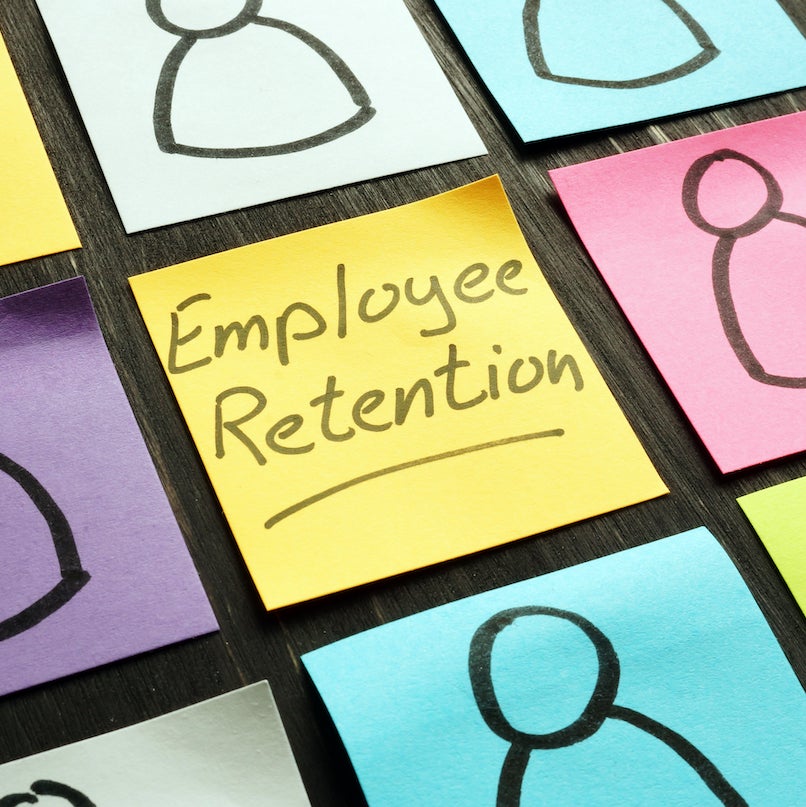Tips for Reducing New Employee Turnover
Wednesday March 10th, 2021
Estimated time to read: 2 minutes, 45 seconds

Bringing a team member onboard is always exciting because new talent comes with a fresh new perspective and ideas that can help drive business success.
Unfortunately, new hires don’t always pan out the way employers hope. In fact, the Work Institute’s 2020 Retention Report found that 37.9% of interviewees left their organization within a year.
Turnover is costly for any organization, but it can often be prevented by taking measures from the first time a potential employee engages with a company. Here are some tips:
1. Get the job description right
Data shows that job characteristics are the top reason for employee turnover within the first 30 days of employment.
Job descriptions should accurately reflect the actual responsibilities of the role being filled. Applicants will tailor their resumes, cover letters and other application materials to the information posted in the job description. Any discrepancy could lead unqualified – or overqualified – candidates to apply. If they get hired and feel like the new position does not meet their expectations, they will be more inclined to start looking for a new job shortly after onboarding.
When writing job descriptions, hiring managers and human resources (HR) teams should include a list of key duties along with qualification requirements and company culture information. This can help applicants decide if the position is a good fit for their skillset and personality.
2. Look for cultural fit
Company culture plays an important role in how employees will adapt to their new work environment, and each individual has their own impact on the environment. Ensuring each candidate is a good cultural fit – meaning they exemplify similar values and behaviors as your existing team – can reduce the possibility of turnover.
To attract applicants who will likely fit in well with your existing employees, HR teams can try incentivizing employee referrals. In fact, the remote work environment has made referrals more important than ever, with isolved finding that 48 percent of HR leaders expect recruiting to be more difficult this year. Tapping into employees’ professional networks can improve the recruitment process and help HR teams quickly fill open positions.
In addition to referrals, hiring managers and HR teams can ask behavioral questions during interviews to identify candidates that are a good fit culturally. Questions that relate to teamwork and values can offer insight into the candidate’s personality. Conducting reference checks is also an option that helps weed out applicants that may not be a great fit.
3. Be clear about career opportunities
Career development is the top reason for turnover in the first year of employment according to the Retention Report. In other words, employees don’t feel like the company can support their goals for future growth and learning. isolved’s Director of Solutions Consultants Brad Ronek says this is why managers need to use performance management tools to keep employees engaged.
“Getting employees engaged with performance management gives them the chance to see exactly where they stand within the organization at any time,” said Ronek. “With the right tools, employees have the ability to request feedback from their manager or colleagues. Being able to get that immediate response outside of the traditional review process is huge. If the employee isn’t doing great, they know what they need to improve on to take their career to the next level.”
Managers should also be clear about development opportunities with candidates. This not only includes communicating opportunities for career advancement, but also encouraging employees to take full advantage of any courses or course paths available within their organization’s learning management system (LMS).
Since retention is the goal, employers should do everything they can to develop talent from within and support employees’ career growth.
4. Train managers to lead effectively
Although just 12 percent of new employees left their companies within the first year of employment due to manager behavior, it is still a cause for concern. Some of the most common behaviors exhibited by managers that led to turnover were unprofessionalism and poor treatment of employees.
Managers are critical components of productive teams. Poor management can reduce morale, productivity and communication throughout the organization. To ensure new employees have a positive experience, HR teams should provide each manager with training on how to respond to employees’ needs. This may include leadership workshops or remedial counseling.
A Positive Experience Throughout Employment
Improving the recruitment and onboarding experience is vital, but HR teams can’t stop there. Every stage of the employment life cycle must be considered in order to ensure employees are happy, productive and not looking for opportunities within a different organization.
Did you know that employee experience is a top priority for 92 percent of HR leaders? Learn more by reviewing our Transforming Employee Experience: A SWOT Analysis of 500 Human Resources Departments report.
